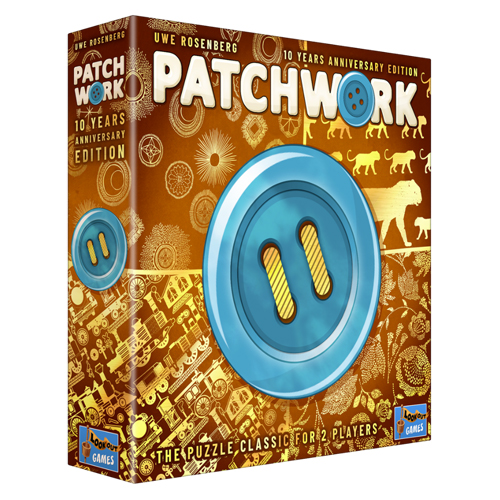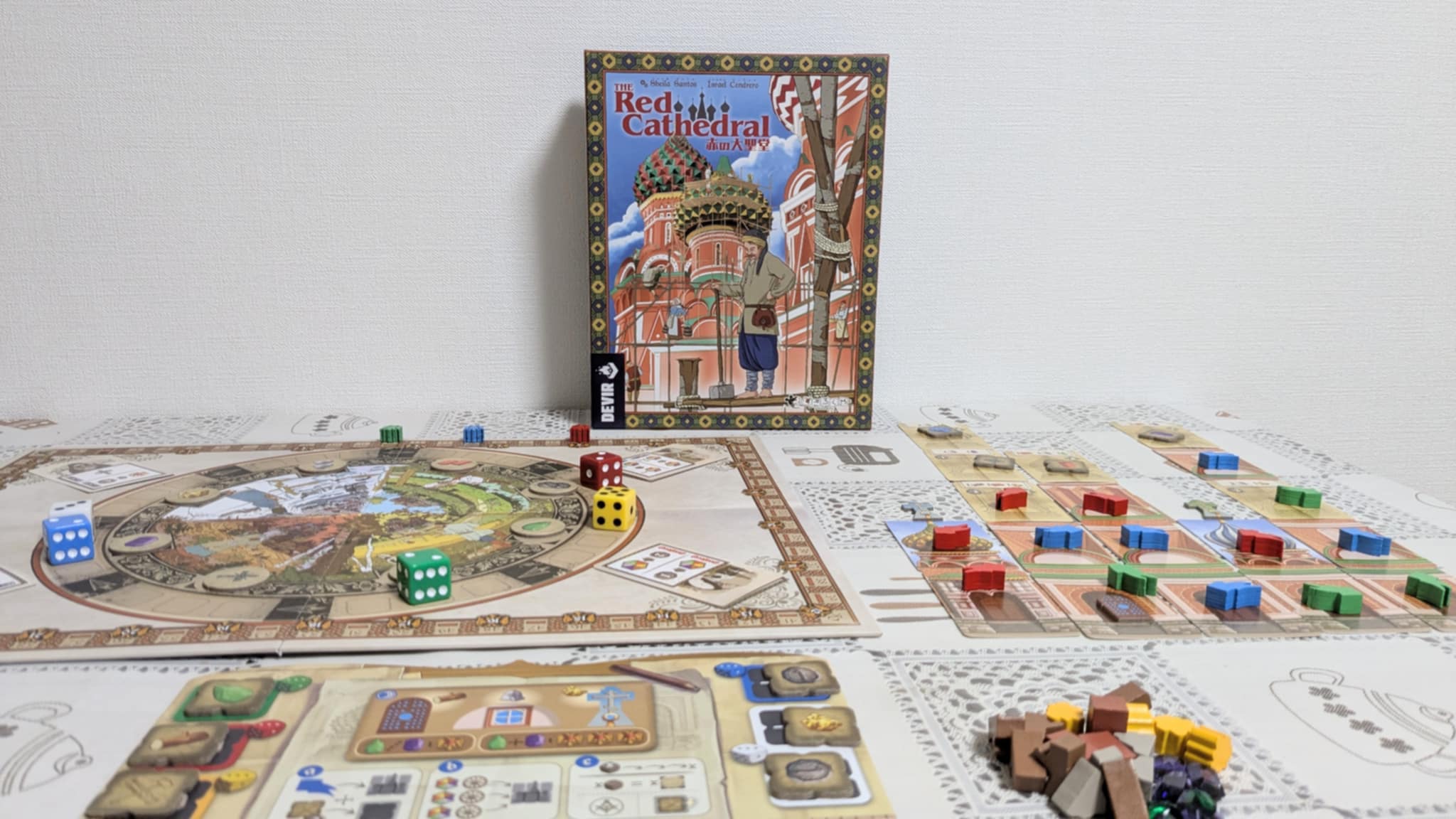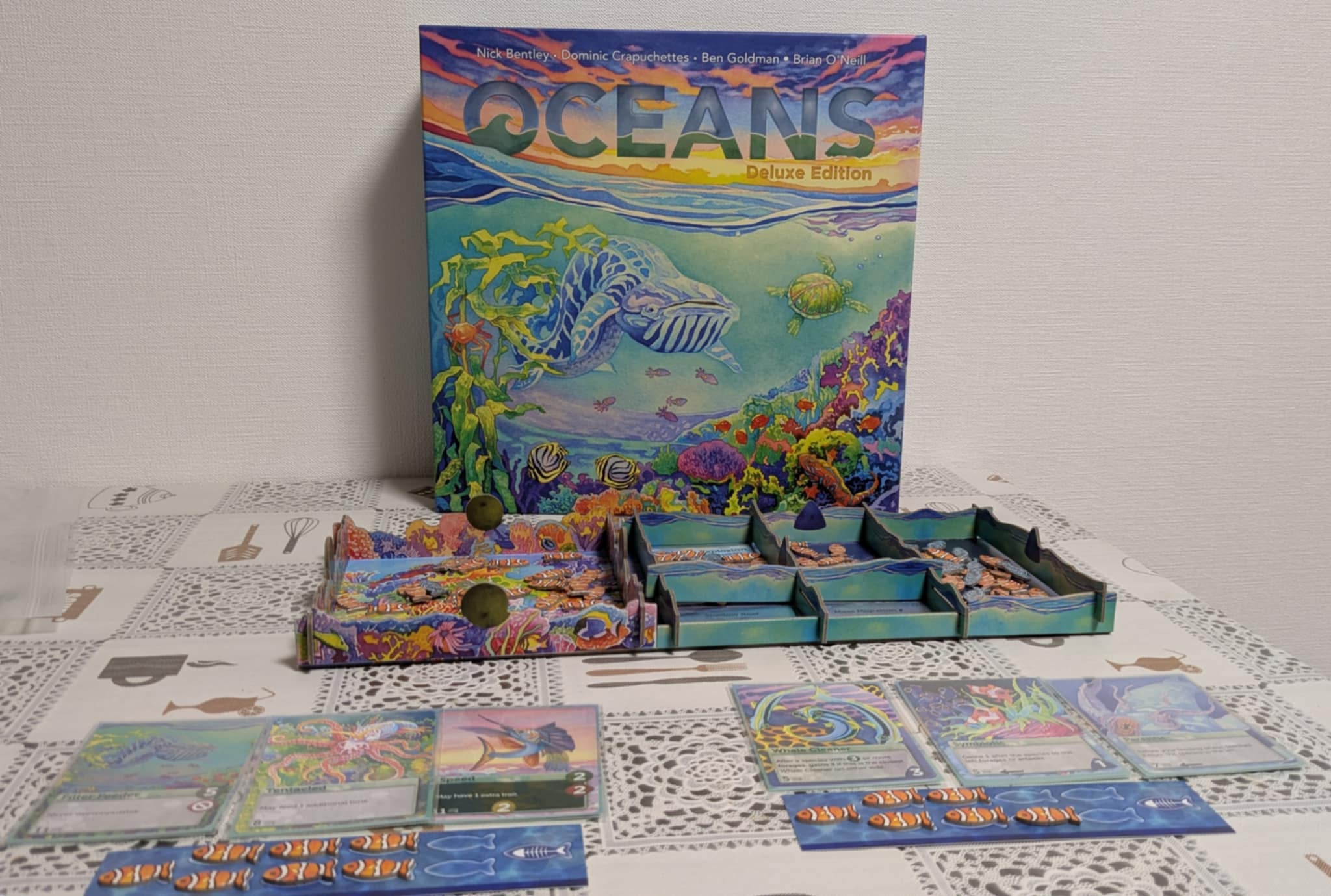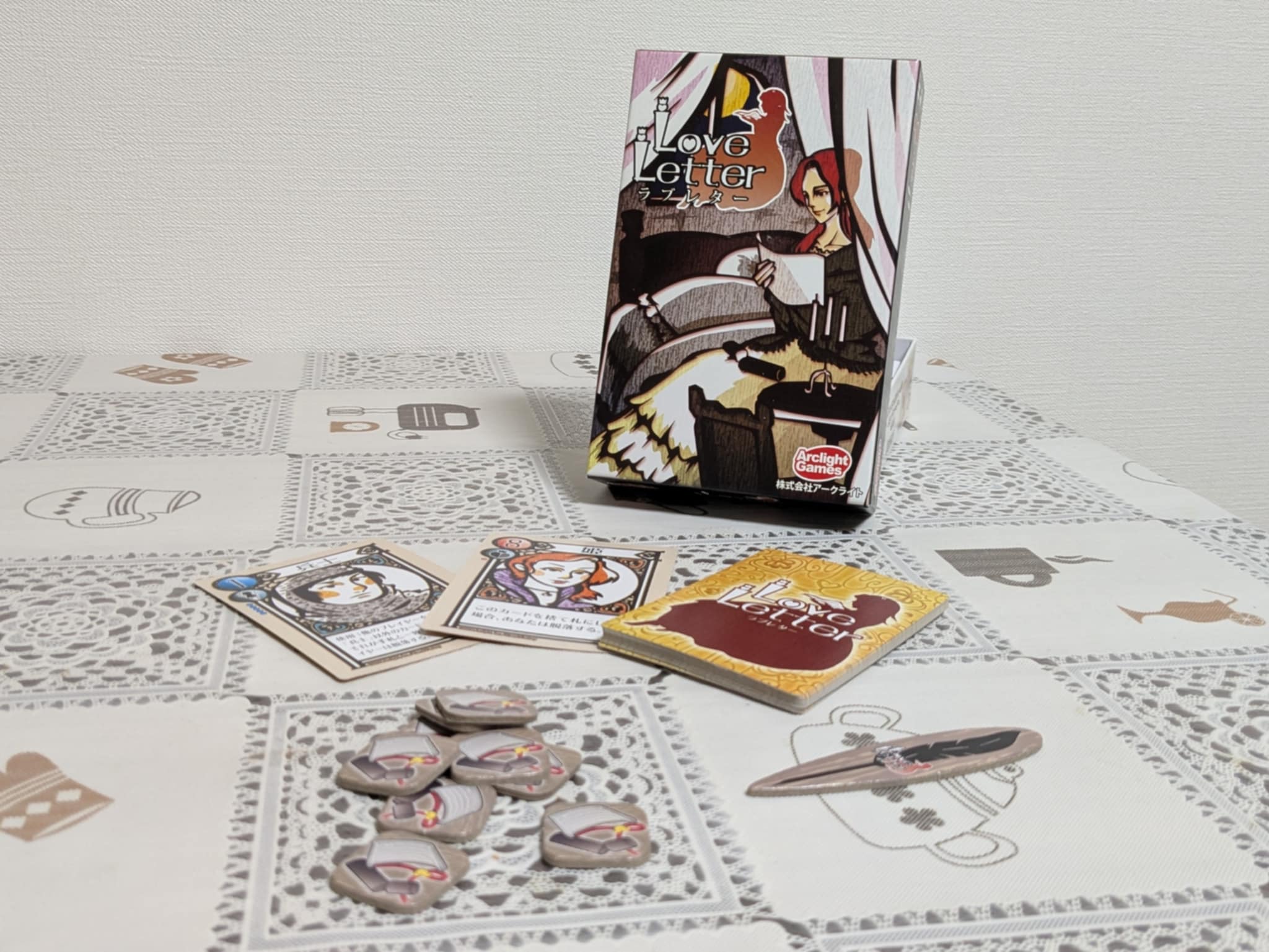Patchwork Board Game Review
Today on The Board Game Dialogue, we’re cozying up with a modern two-player classic that has warmed the hearts of gamers for nearly a decade. Say hello to Patchwork, a delightfully clever board game about quilting—yes, quilting!—that blends charming aesthetics with deep strategic gameplay. Let’s unravel what makes this little box of fabric scraps such a huge hit at the table.
What Is Patchwork?
Patchwork is a two-player abstract strategy board game designed by the brilliant Uwe Rosenberg and published by Lookout Games. Unlike some of Rosenberg’s other titles like Agricola or A Feast for Odin, Patchwork is tight, elegant, and refreshingly accessible. The theme? Competing to create the most beautiful quilt on a personal 9×9 grid using oddly-shaped fabric patches—each with its own cost in buttons and time.
The gameplay revolves around drafting polyomino tiles from a shared circle and placing them on your quilt board. Each patch takes time to sew and costs buttons, which are also your victory points. Timing and tile placement are crucial, and smart spatial thinking can give you the edge.
The game features:
- Player Count: 2 players
- Playtime: 30 minutes
- Complexity: Light-to-Medium
- Mechanics: Tile Placement, Time Track Turn Order, Resource Management
- Theme: Quilting, Abstract Puzzle
So grab a cup of tea, shuffle those patches, and get ready—because Patchwork is ready to share the secrets behind its thoughtful design. Let’s welcome this cozy board game to the spotlight and hear what it has to say.
The Tactile Magic of Patchwork’s Tile-Laying Board Game Design
Me: Welcome to the spotlight, Patchwork. You’re quite the elegant gentleman among modern board games. Can we begin with what instantly grabs players—the sheer joy of your polyomino tiles?
Patchwork: Thank you kindly. Yes, my tile-laying charm is rooted in a long-standing tradition—think Tetris, but on the table. Polyomino-based board games have become quite the design trend, and I’m proud to be one of the most beloved among them.
Me: There’s something inherently satisfying about fitting those pieces together. What makes that feel so good?
Patchwork: It’s the tactility. Unlike digital games, board games let players physically interact with the components. From the very first turn, I encourage players to pick up tiles, rotate them, and nestle them onto their personal quilt board. It’s a hands-on puzzle that feels great to engage with.
Me: And you don’t just make it feel good—you make it mean something?
Patchwork: Exactly. I reward players for placing tiles efficiently. The better a piece fits, the more satisfying it is—not just physically, but strategically. And yes, that creates a lovely positive feedback loop. Handling the pieces is fun, placing them neatly is even better, and then scoring buttons for your efforts? That’s the cherry on top.
Me: So that loop—touch, place, score—is what keeps players hooked?
Patchwork: Precisely. That loop is the heartbeat of my board game experience. It draws players in and keeps them eager for the next turn. It’s not just polyomino placement—it’s tactile, rewarding, and elegantly simple.

Strategic Simplicity: Patchwork’s Clever Focus on Tile-Laying
Me: So, let’s get to the heart of it—would you say your tile-laying system is the core of your design?
Patchwork: Without a doubt. I’m what you’d call a focused design. Everything in me—every rule, every component—exists to highlight one central mechanic: polyomino tile placement. It’s the same fundamental that helped Tetris become a legend, and I aim to bring that same joy to the tabletop.
Me: “Focused design”—can you explain what that means in the context of your gameplay?
Patchwork: Absolutely. My scoring system is clean and intuitive: every patch has a size (which gives you coverage and points), a button income value (which produces points), a button cost (which subtracts points), and a time cost (which controls the game pace). If you really want to get technical, each patch has an intrinsic value—how many points per unit of time it offers.
Me: That sounds pretty mathematical.
Patchwork: It is! But here’s the twist. If that was all there was, I’d just be a math puzzle. What makes me a game is the spatial puzzle—how and where you lay your pieces. Every patch you place shapes your future turns. Are you opening space for efficient moves later—or limiting your future choices?
Me: So while the intrinsic value is measurable, the board space value is unpredictable?
Patchwork: Exactly. That’s where the magic happens. The fuzziness of polyomino placement introduces just enough uncertainty to make every choice meaningful. It’s not just about numbers—it’s about foresight, adaptation, and crafting your quilt with care. That’s the elegant tension I offer, and it ties directly back to my tile-laying core.
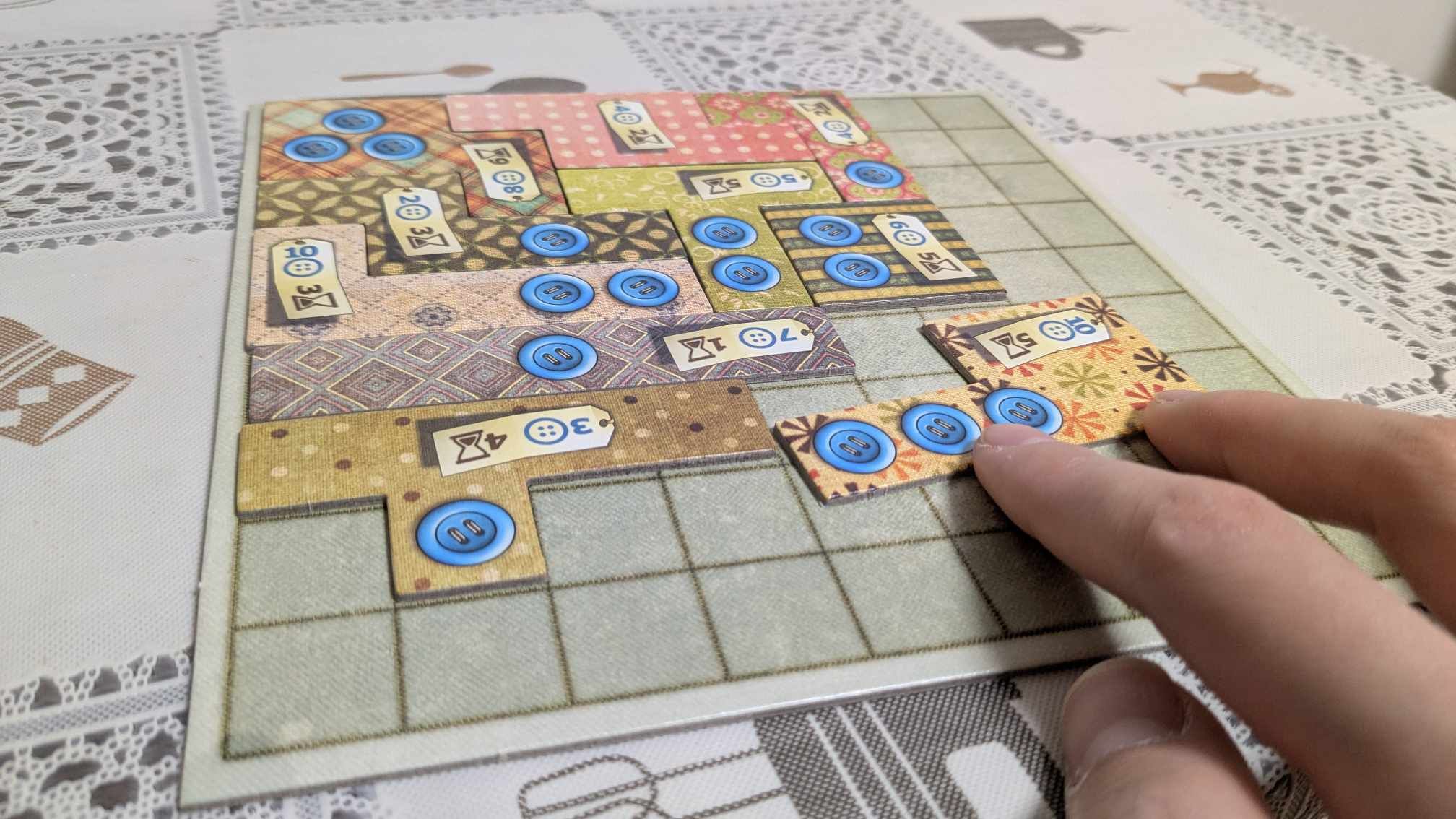
Depth of Decisions in Patchwork: Simple Choices, Deep Impact
Me: Let’s dive deeper into your mechanics. What exactly are players doing on their turn?
Patchwork: Most of the time, players are selecting a polyomino patch from the next three available on the time board. That limit—just three options—drastically reduces analysis paralysis. It’s easy to dismiss choices that are too expensive in time or buttons, so even new players can jump right in.
Me: That seems very welcoming. A design decision clearly made with accessibility in mind.
Patchwork: Precisely. I want to be approachable to everyone. But don’t mistake that for being shallow. Behind this welcoming exterior lies a web of deep, strategic decision-making. Every choice—every tile—can carry long-term consequences.
Me: Could you walk me through how the decision space deepens with experience?
Patchwork: Of course. New players tend to grab whatever fits nicely on their quilt board. That’s a good start! But with time, players begin to think differently—they take awkward shapes now to line up that perfect patch two turns from now. Skilled players go further still. They’ll anticipate what pieces are coming up and how to deny their opponent a valuable move. They will take pieces to force their opponent into three bad choices.
Me: And the display of all tiles in a fixed loop means you can plan ahead?
Patchwork: That’s the elegance. I offer full information. If you can see the right moves, you can play around them. Mastering my spatial economy and tempo control isn’t easy, but it’s endlessly rewarding. I am a tile-laying board game that grows with players.
Me: It sounds like you offer a fantastic skill curve—easy to learn, but a lifetime to master.
Patchwork: That’s my intention. My quilt may look cozy, but underneath the surface, it’s stitched together with layers of strategy.
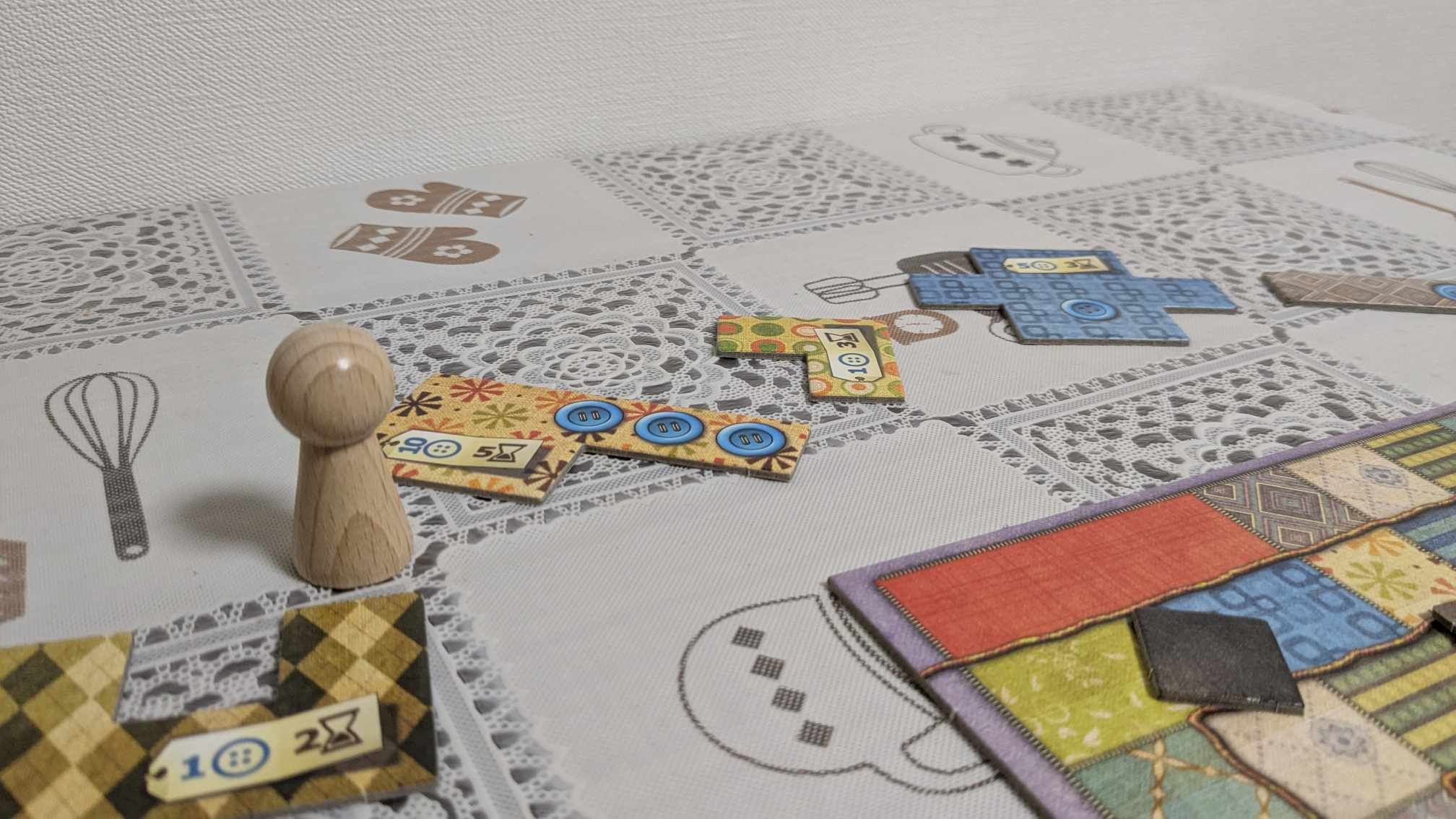
Time as a Resource – The Tempo Strategy of Patchwork
Me: Patchwork, you’ve already impressed us with your clever tile-laying gameplay. But let’s talk about time—your second core resource. What’s the idea behind making time such a central part of your mechanics?
Patchwork: Ah, yes—time. In the game, every patch takes time to sew, and time is as precious as buttons. It’s also a clever tempo mechanic. The player furthest behind on the time track takes the next turn, which means efficient time management is critical.
Me: That creates an interesting tradeoff. Better pieces often take more time, right?
Patchwork: Exactly. Grabbing a big, useful tile might advance your quilt, but it can also give your opponent multiple turns while you sit and wait. Over the course of the game, poor pacing can leave you with significantly fewer turns.
Me: That sounds potentially unbalanced.
Patchwork: A fair concern—but here’s the solution. I offer players a pass action. Instead of placing a patch, you may advance your token just past your opponent’s on the time track and collect one button per space moved. It’s not ideal, but it helps maintain turn parity and keeps both players meaningfully engaged.
Me: So, going slow is the winning strategy?
Patchwork: Not quite. You see, along the time track are five bonus 1×1 tiles. They’re deceptively small, but absolutely vital for filling tight spaces. And if you’re the first to complete a perfect 7×7 square, you earn a 7-point bonus—huge in a game where every point counts.
Me: So there’s a race element cleverly woven into the game?
Patchwork: Precisely. It’s not just about sewing slowly or quickly—it’s about adjusting your tempo to the state of your quilt, your opponent’s position, and those precious bonus tiles. The time track is where strategy, timing, and spatial awareness truly come together.
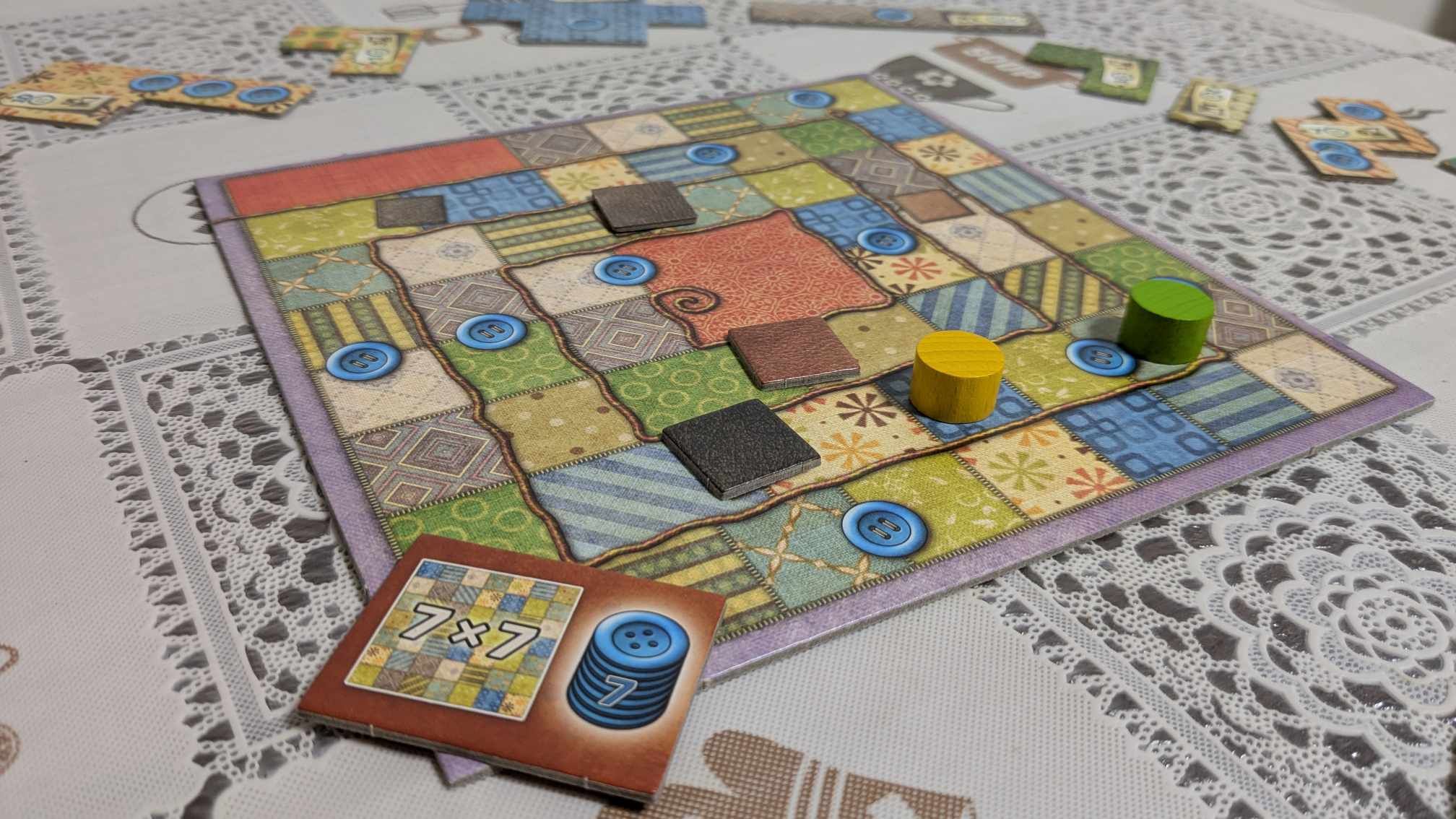
Quilting the Perfect Theme – Cozy Design Meets Clever Mechanics
Me: Patchwork, I must say, few games feel as immediately inviting as you. There’s something so charming and calming about your theme. How important was that to your identity?
Patchwork: Thank you kindly. I do take pride in being a cozy board game. The theme isn’t just stitched on—it’s interwoven with everything I do. I’m not about building empires or slaying monsters. I’m about sewing a beautiful quilt, one patch at a time.
Me: And that idea translates beautifully into your mechanics—polyomino tile laying, button economy, and the time track.
Patchwork: That was very intentional. Every action supports the theme. Spending buttons to sew patches fits naturally into the quilting setting. Taking time to sew a piece? Of course! And scoring based on how complete and “pretty” your quilt is? That’s exactly the point. The result is a game that’s not just logical, but intuitive. You don’t just play the rules—you feel them.
Me: So the theme helps players understand the gameplay?
Patchwork: Absolutely. The best themes do more than decorate—they make a game easier to learn and more pleasant to play. My rulebook is clear, my components are tactile and well-made, and my presentation is friendly. It’s easy to bring me to the table with newcomers and seasoned players alike.
Me: And your success shows—you even come in multiple art styles!
Patchwork: A touch of variety keeps things fresh, don’t you think? From Halloween to Americana editions, the heart of the game stays the same. Just a lovely little game about making something warm, personal, and quietly beautiful.
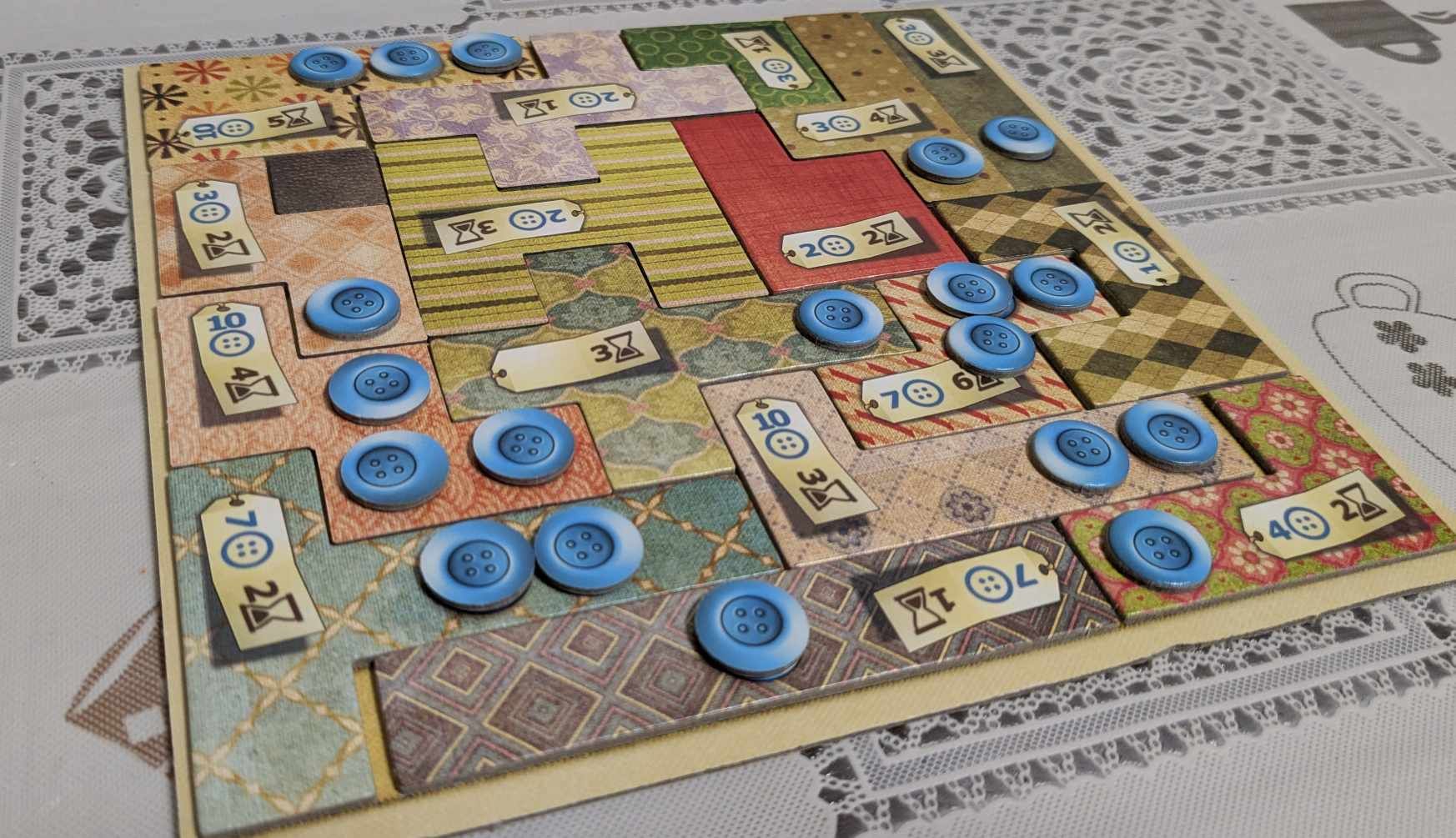
A Gentle Game with Grand Aspirations – Patchwork’s Shot at Timelessness
Me: Normally this would be the part of the interview where I ask about drawbacks or shortcomings. But… I can’t quite bring myself to do that with you.
Patchwork: That’s very kind of you. I certainly wouldn’t claim perfection—but I do try my best to be a well-crafted experience. If there’s anything I hope for, it’s that I might one day be spoken of in the same breath as games that have truly stood the test of time.
Me: You mean like Chess, Go, or Poker?
Patchwork: Precisely. I say this with the utmost humility. Those are legendary designs, crafted with profound clarity and staying power. But I believe I offer something special—a quiet, focused elegance. Every piece of mine is open information. The entire sequence of patches is visible. This small detail allows for strategy that deepens with skill.
Me: This circles back to the hidden depth of decision?
Patchwork: Just so. Casual players enjoy the tactile fun, the joy of filling in a quilt. But experienced players begin to plan ahead—thinking not just of the best tile now, but two, three turns in the future. It adds layers of foresight and long-term planning without ever sacrificing accessibility.
Me: And you avoid the memorization traps of some perfect information games.
Patchwork: Indeed. With randomized tile order, I sidestep the deterministic patterns of traditional openings. In that way, I follow in the footsteps of Chess960—a modern variant that strives for freshness and fairness. Yet I remain firmly grounded in gentler pursuits. I don’t demand study; I simply invite discovery.
Me: That’s the magic, isn’t it? You reward mastery without punishing newcomers.
Patchwork: That’s the goal. If I can be a game that families cherish, couples return to, and strategic thinkers admire—then I will have stitched myself a small place in the grand quilt of game history.

Final Verdict: A Quilted Masterpiece That Could Join the Greats
Me: Patchwork, it has truly been a pleasure. Before we wrap up, is there anything you’d like to say to our readers?
Patchwork: Just this—I may be a quiet game, stitched from simple parts, but I’m proud of the comfort and clarity I bring to the table. I don’t ask for much, only that players bring a bit of focus and a love for fitting things just right.
Me: And for what it’s worth, you’re one of the best boxes any gamer can own. You represent the very best of modern board game design: satisfying mechanics, clever depth, warm tactility, and a charm that welcomes anyone. You’re cozy and elegant, but also focused and strategic—a true focus Euro in the most inviting wrapping.
Patchwork: That’s very kind. I’ll keep doing what I do best—bringing quiet joy and thoughtful moments to tables around the world.
Me: And maybe, just maybe, one day we’ll see you on the shelf beside the greats like Chess and Go. You’ve certainly earned your place in the conversation. Thank you for joining us.
Patchwork: Thank you. And happy sewing.
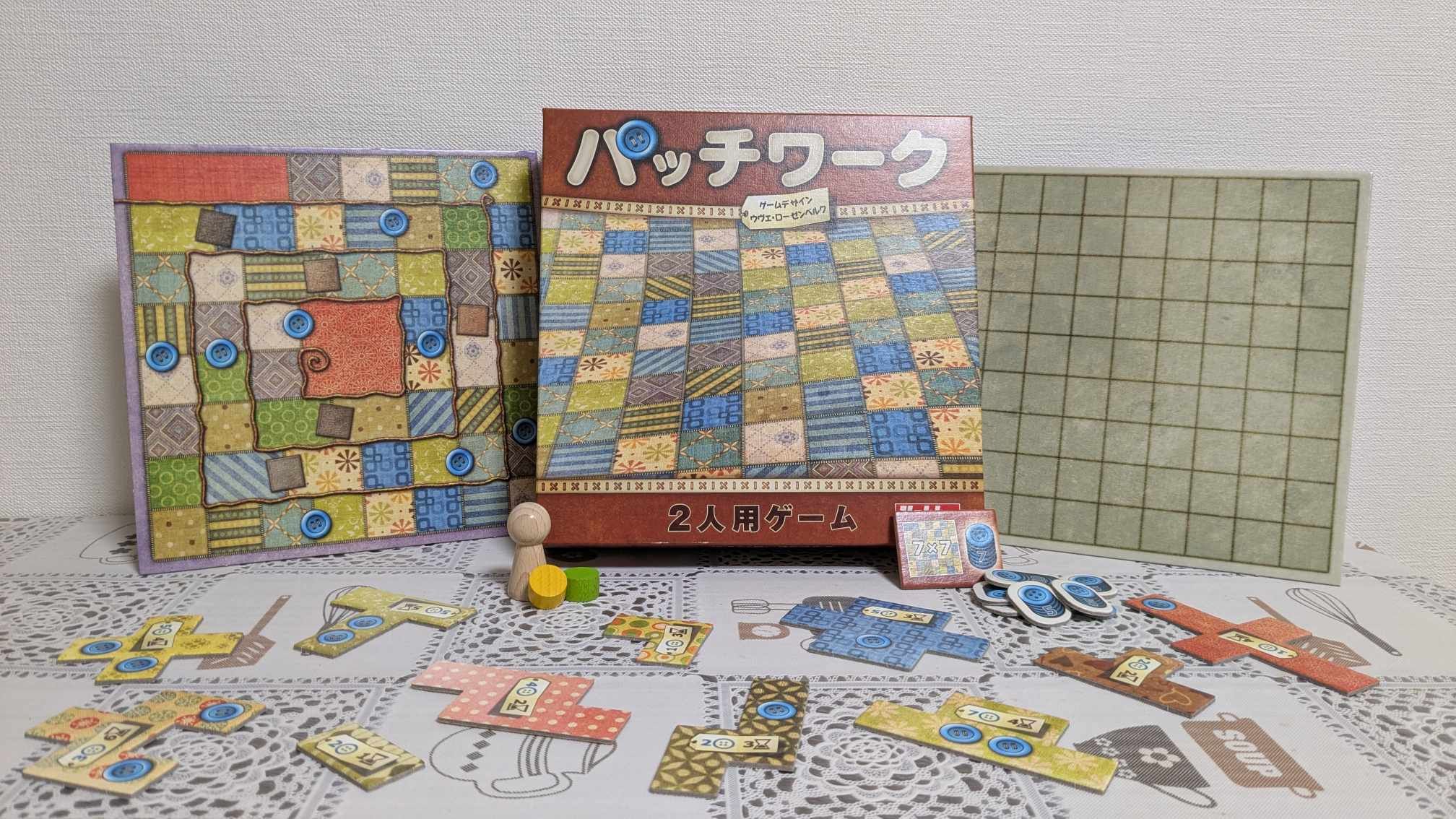
Conclusion: A Modern Classic Sewn to Perfection
Patchwork is the kind of game that reminds us why we love board games in the first place. With a satisfyingly tactile core, a brilliantly simple ruleset, and a deep well of strategic decision-making, it’s a quiet triumph of focused design. Whether you’re introducing someone new to the hobby or sitting down for your hundredth play, it delivers a warm, rewarding experience every time.
Looking for more games like Patchwork? If you want to explore more of Uwe Rosenberg’s brilliant use of polyominoes, try New York Zoo, which blends animal placement with tile efficiency. For a different flavor of Uwe, there’s Agricola, the quintessential farming Euro. And of course, if you want another perfect abstract game that balances visual appeal and strategic depth, look no further than Azul—a timeless classic in its own right.
Final Rating: 10/10 — A Masterpiece in a Small Box
✅ Pros:
Incredibly satisfying core game loop
Elegant, focused game design
Endless replayability through evolving strategies
Inviting theme and tactile presentation
Simple rules that hide a deep, rewarding challenge
❌ Cons:
None. Truly a perfect small-box game.
Patchwork doesn’t shout. It doesn’t need to. It’s confident, humble, and quietly brilliant—just like any classic should be.

